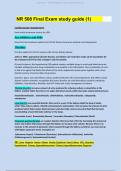College aantekeningen
College aantekeningen Introduction to Communication Science
College aantekeningen van het vak ICS aan de VU. De colleges zijn gegeven als 'chapters', dus het komt enigszins overeen met het boek van A First Look at Communication Theory.
[Meer zien]













